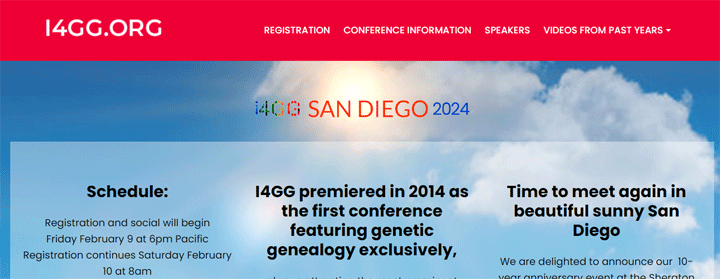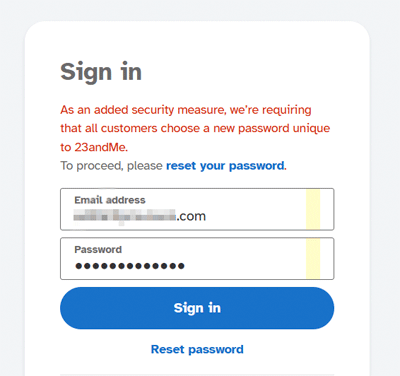Every year genetic genealogists gather in San Diego in February for the i4GG conference founded by CeCe Moore and Dr. Tim Janzen. This year is the tenth anniversary and I am honored to be one of the presenters again. Click here for the i4GG web site.
In past years I have talked about the new features at GEDmatch. In 2022, this was a particularly dense lecture. (click here for the slides), as there were so many new and enhanced features. Clustering was taking the community by storm and GEDmatch has two versions of that, one of which even includes tree building.
{UPDATE 9 Feb 2024] My talk for i4GG this year is about how to use Ethnicity to solve DNA cases. This year, I will talk about GEDmatch yet again, but as there are fewer new features, I will include some of the ways that site has helped me solve DNA puzzles.
One nice new feature is that the site now sends you an email when you have a new match. You can select both the frequency of those emails and the match size which triggers an email.
Whenever I get a new match on the One-to-Many, the first thing I want to see is who else they match among my relatives, so it has always puzzled me why they did not include a button to do that. Needless to say this was a feature I requested. Now it is finally here! There is a column called ICW tool which has the word Match which when clicked takes you to the function People who match both, or 1 of 2 kits with the kit numbers filled in, ready to use.
Come to my lecture to hear more!


 We have all been advised to guard our online privacy but our DNA is not our social security number nor our credit card so I am not worried about this yet. The hackers were able to use login credentials that were leaked from other sites to access those people’s accounts at 23andme. Then they could see information about other 23andme users whose DNA matched the compromised account. The type of information exposed was ethnicity, other relatives, and family tree information, plus whatever you said about yourself. This does not seem worrisome to me. My actual DNA was not exposed and even if it were, it would take a very DNA savvy hacker to use it to create a fake relative of mine.
We have all been advised to guard our online privacy but our DNA is not our social security number nor our credit card so I am not worried about this yet. The hackers were able to use login credentials that were leaked from other sites to access those people’s accounts at 23andme. Then they could see information about other 23andme users whose DNA matched the compromised account. The type of information exposed was ethnicity, other relatives, and family tree information, plus whatever you said about yourself. This does not seem worrisome to me. My actual DNA was not exposed and even if it were, it would take a very DNA savvy hacker to use it to create a fake relative of mine.



